Illinois Crop Update – July 4, 2025
Kathryn Seebruck – Commercial Agriculture Educator
Winnebago County
Soil Conditions: Mildly Dry (soil is drier than normal, plant growth may have slowed)
Across much of the area, there are entire fields of soybeans exhibiting cupping. The widespread nature of the symptom could point to environmental stress as the cause, potentially from hot and dry conditions over the past week and a half. Many soybean fields are still not canopied.
Corn has greatly increased in height recently due to the accumulation of over 240 GDDs over the past week and a half. I have not seen and there have not been any reports of disease in corn thus far this season.
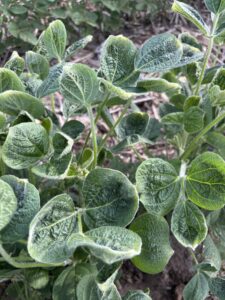
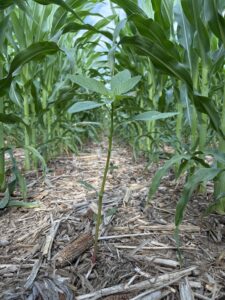
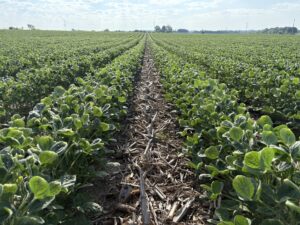
Steve Brand – Commercial Agriculture Specialist
Dekalb County
Soil Conditions: Mildly Dry (soil is drier than normal, plant growth may have slowed
Overall conditions in Northern IL have remained hot and dry. We have consistently been missing the rain to the north or south and the area is sliding back into a predominantly D1 drought. The rain we received a week ago has helped most fields to recover from any drought stress, but the fields that have missed rain the entire season are struggling badly with skinny withered pineapple corn. There are a few chances of rain predicted in the near future but overall it appears we will be seeing more of the same hot and dry weather.
Corn is still varying throughout the region with some fields in Lake and McHenry county being slowed and stunted around V6, while an overwhelming majority of the region is sitting around V9-V10. Some fields are V12 with spike leaf present but those fields are far and few between as I am writing this. The corn has jumped in height on average, but I am expecting a shorter stunted corn plant this year overall due to the weather conditions. I have yet to find disease in any of the fields I have scouted this season in the area. The hot and dry conditions are suppressing any disease emergence on the corn, but areas that have been hit with isolated storms could still have disease starting to propagate. Overall corn is short, thirsty, and disease free going into the 4th weekend.
Soybeans are varying between R1 and R2. Flowers were present in every field I scouted. The soybeans are short overall again due to the environmental conditions. Fields have not canopied very well if at all yet into the season. I have not seen disease in the soybeans, but over the last couple of weeks there has been plenty of burn damage that has been exacerbated from the hot and dry conditions. The beans should grow out of it like they always do, but just a lot of burn and cupping visible in fields.
Wheat is all but ripe across the north. 11.4 feekes or full maturity is upon us in most fields and Harvest should start rolling in the next handful of days depending on folks 4th of July plans. Disease is all but non-existant in the fields I’ve seen. The dry spring and summer never allowed the fungus and bacteria to take hold, and it should be a clean crop overall this summer.
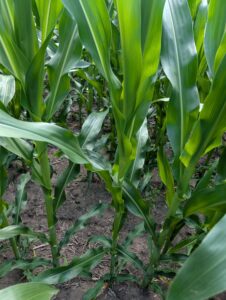
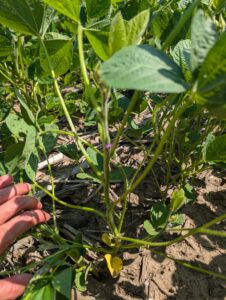
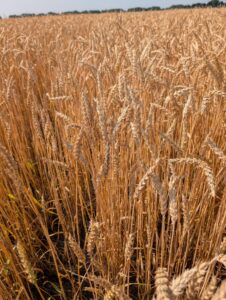
Russ Higgins – Commercial Agriculture Educator
Grundy County
Soil Conditions: Moderately Dry (soil is dry, plants may be browning or stressed, water bodies are low)
Almost all growing seasons farmers reach a stretch where the crop is “holding on”. That description fits much of northeast Illinois as additional acres fall into the abnormally dry to moderate drought category on the U.S. Drought Monitor. With high daytime temperatures, corn plants are starting to “wrap” to conserve moisture. We are starting to see tassels appear on the earliest planted corn as it reaches a critical yield determining stage. Tar spot is starting its spread across Illinois. Statewide reports can be followed on the Corn ipmPIPE website. This week we are also in the window of application for White mold fungicides. The Crop Protection Network provides a risk assessment tool accessing current weather data to help in fungicide decision making. Limited precipitation has allowed for quality second cutting harvest. Happy 4th of July to all!
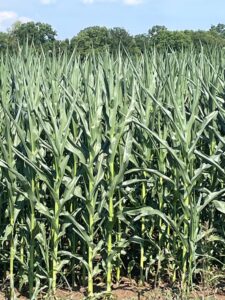
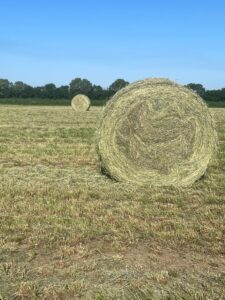
Meagan Diss – Commercial Agriculture Specialist
Warren County
Soil Conditions: Mildly Dry (soil is drier than normal, plant growth may have slowed)
Things are moving along in Western Illinois. North of Monmouth we are seeing some tassels on corn as well nearing flowering on the earlier planted soybeans. Conditions have been dry and not quite as hot as last week but still hot. Precipitation has been scattered throughout the region as well with some areas getting 0.5inches or more while others getting nothing. Overall, conditions look on track. We have had confirmed tar spot in Warren and McDonough Counties this year so encouraging all to make sure they are walking their fields. Keep an eye on the Crop Protection Network tar spot map as well.





